The answer is more than I had! We managed to light an LED with two lemons and could see between 2 and 3 volts from the lemon batteries on a voltmeter, but the current passing through was very small. Even with 6 lemons we couldn't light a small screw lightbulb.
Turn a lemon into a battery
Did you know you can turn a lemon into a battery? The acidic juice in a lemon can produce enough power when combined with zinc and copper to light an LED but we couldn't get it to do much more than that.
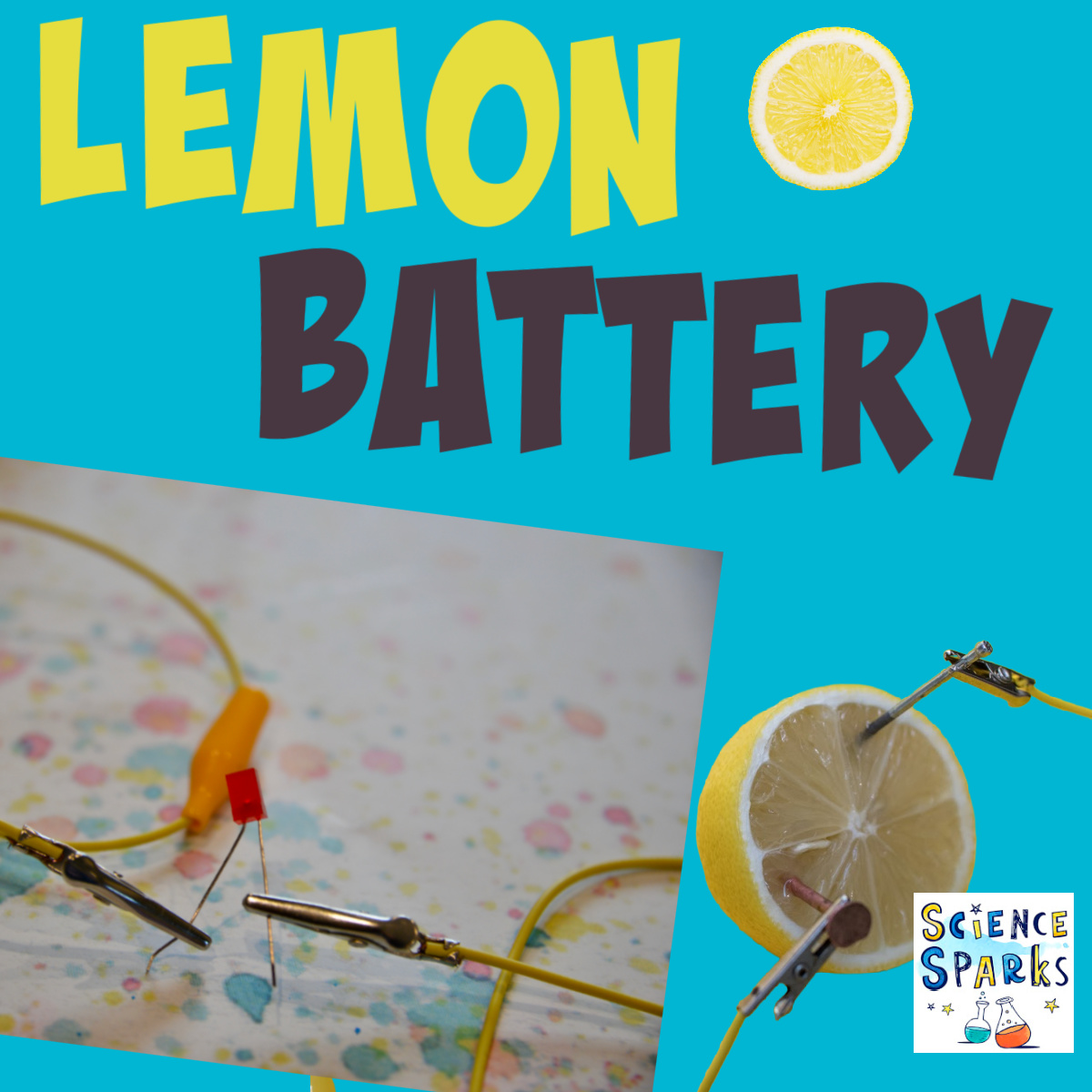
How to make a lemon battery
You'll need:
2-3 lemons
Knife
Copper and silver coins (or a galvanised nail)
3 wires with crocodile clips attached
Voltmeter ( optional )
Lemon Battery Instructions
Roll the lemons between your hands to help loosen up the juice inside.
Carefully make two slits in each lemon with a knife ( ask an adult to help ).
Place a copper coin and either a silver coin or a galvanised nail into each lemon.
Attach the lemons to each other using wires and crocodile clips. The copper of one lemon should attach to the zinc of another lemon to work.
If you have an LED, 2 lemons should be enough to light it. You can also use a voltmeter/multimeter to measure the voltage passing through.
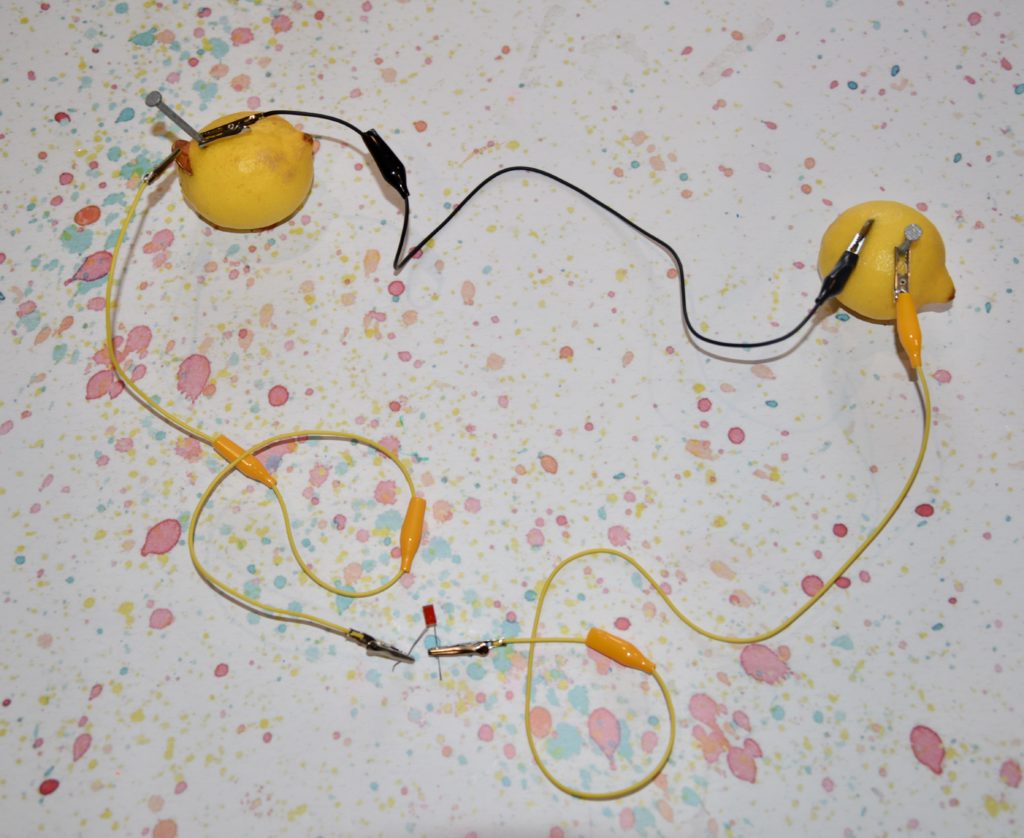
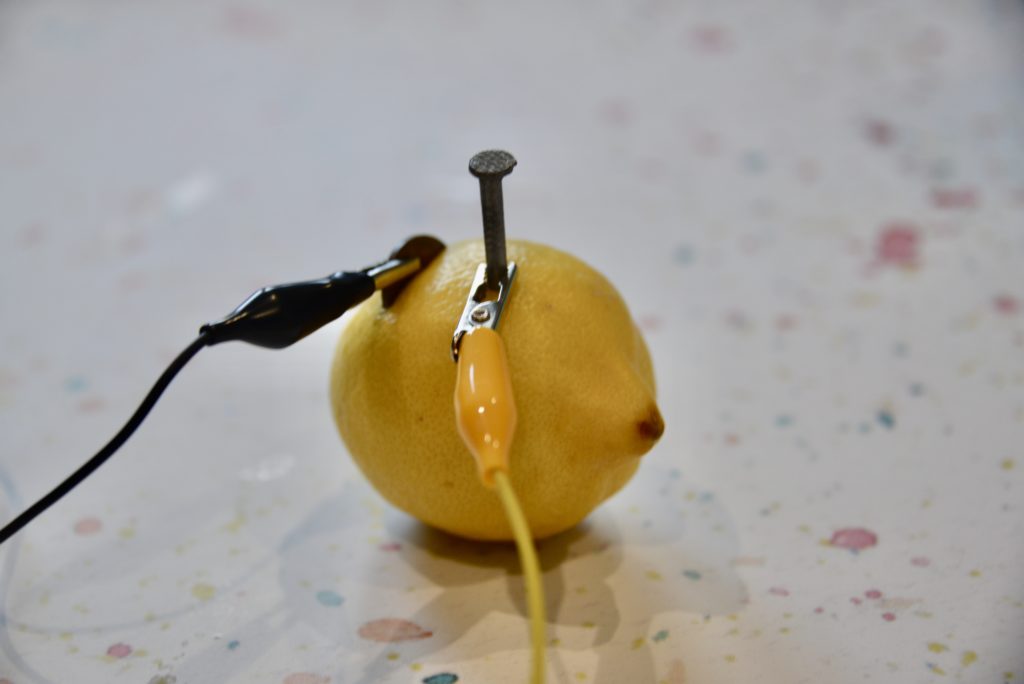
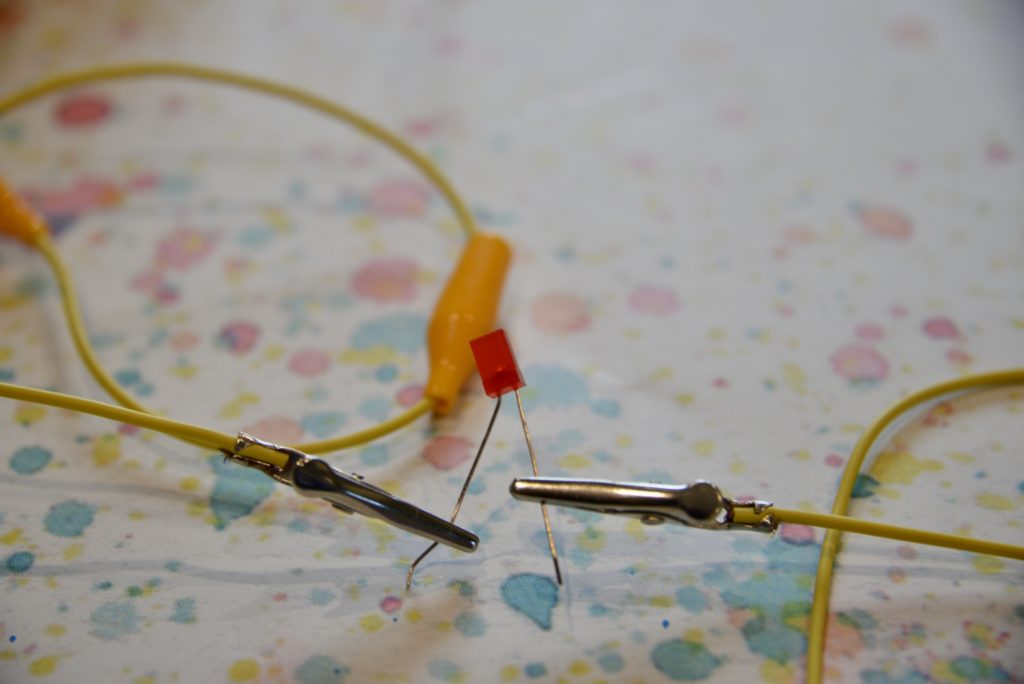
How does a lemon battery work
A standard battery is made up of an anode, cathode and electrolyte solution.
Anode - this is the negative end and is the zinc nail or coin in our lemon battery
Cathode - this is the positive end and is the copper coin or strip in our battery.
Electrolyte solution - this is an acidic solution and is the lemon juice in our lemon battery
When a battery becomes part of an electric circuit a chemical reaction at the anode generates electrons ( negatively charged particles ) which want to travel to the cathode ( positive end of the battery ) but cannot travel through the electrolyte solution. Instead the electrons travel around the circuit to reach the cathode. It's a longer route, but this flow of electrons is what we call electric current.
A battery acts like a pump, pushing the electric charge around the circuit. We call this force voltage. The higher the voltage the more current flows.
What is electricity?
Electricity is the flow of charged particles.
An electric current is the flow of electrons around a circuit.
Extra Challenges - lemon battery
Try a potato battery
Try using potatoes instead of lemons to make a potato battery.
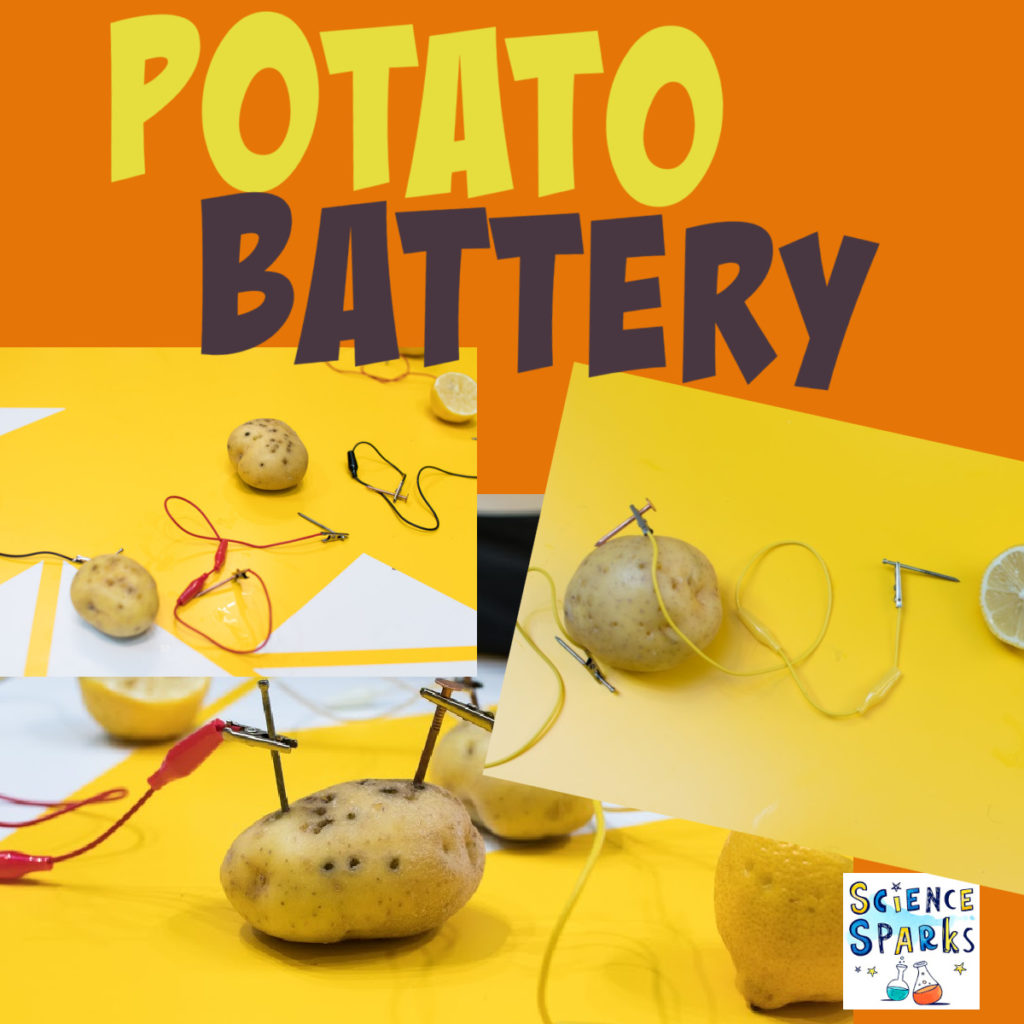
Experiment with different coins, which combinations work?
Try other fruits and vegetables, can you predict which will work?
Don't forget to check out my other electricity experiments too!
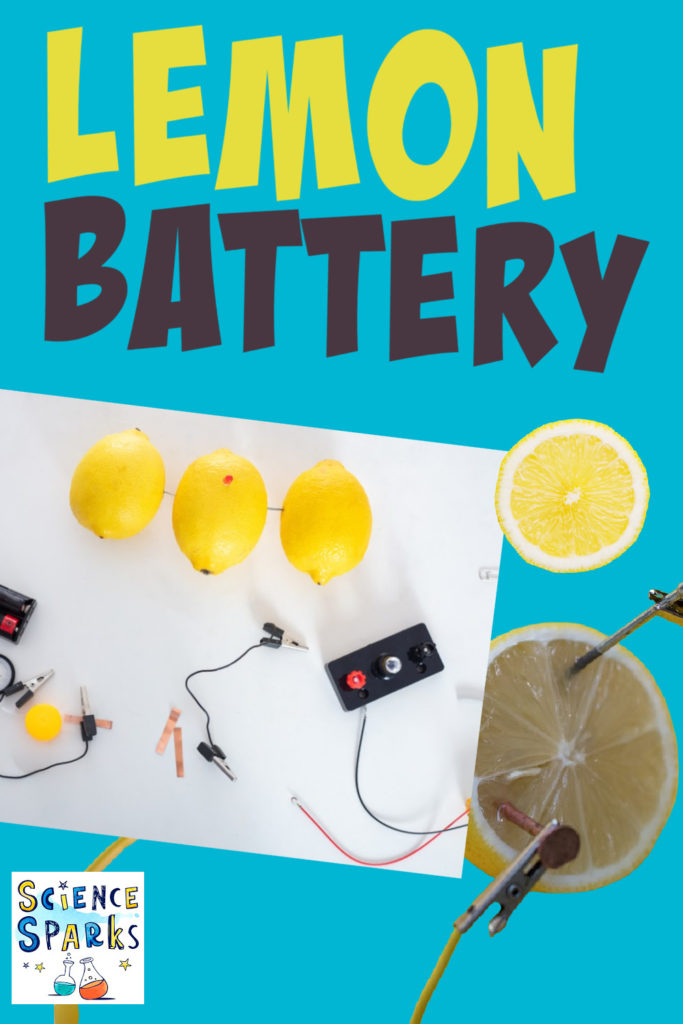
Last Updated on March 17, 2022 by Emma Vanstone
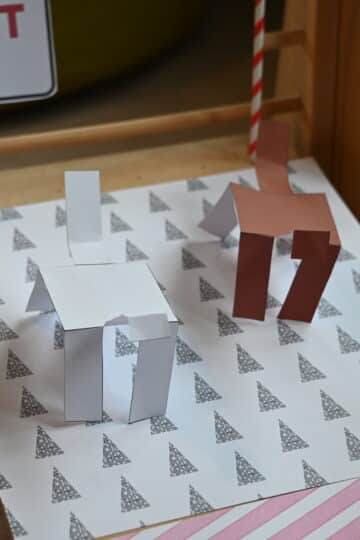
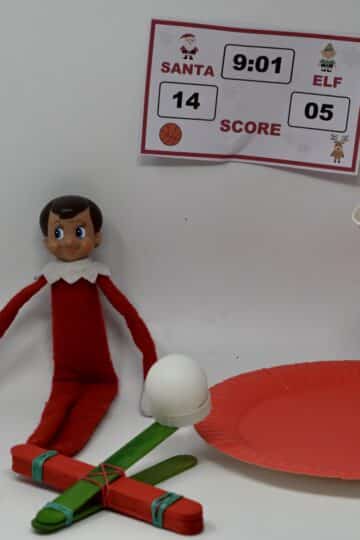


Leave a Reply